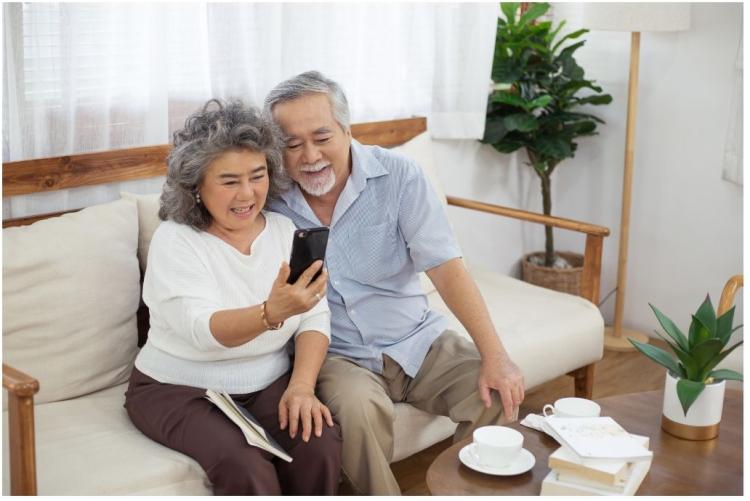By Christina Kam, Memory Hub Intern, Spring/Summer 2025
Staying connected with someone living with dementia can feel challenging at times, especially when words or memories fade. But even small moments of connection are meaningful. A simple change made all the difference when my grandfather was living with dementia. Because I added shortcuts on his phone’s home screen, he could call or video chat me with just one tap. It took only a few minutes to set up, but seeing his face light up when he could reach me easily reminded me how powerful technology can be.
Many care partners wonder how to keep those connections with their loved ones strong. While technology can’t solve every challenge, it can help people stay in touch, feel included, and remain safe. In this article, we’ll share how you can use technology to help your loved one continue to experience the benefits of social connection.
“Social connection plays a crucial role in maintaining brain health, and technology presents a meaningful opportunity to keep people connected, especially those with limited mobility or whose families live far away,” says Carolyn Parsey, PhD, a neuropsychologist at CommonSpirit Neurology St. Anthony North in Westminster, Colorado. Dr. Parsey previously worked as a neuropsychologist at UW Medicine, where she created and offered technology workshops and resources for the community at the Memory Hub. She emphasizes that technology cannot replace traditional face-to-face interactions but can serve as a valuable tool to support and expand social engagement that might otherwise be infrequent or inaccessible.
Of course, trying something new can feel overwhelming for both the person living with dementia and their care partners. Dr. Parsey emphasized the importance of starting with small changes, building on existing routines, and allowing time for learning. She takes a flexible approach, explaining, “I always try to meet people where they’re at.” Even when something doesn’t work right away, patience and creativity often lead to meaningful solutions.
There are two common approaches to making technology more accessible for people with dementia: simplifying existing smartphones by customizing the home screen and removing unnecessary apps, or using purpose-built devices designed for ease of use. For example, dementia-friendly phones like the RAZ Memory Cell Phone feature large icons and photo buttons for easy calling.
These types of phones can reduce confusion, prevent misdials, and support consistent communication with trusted contacts. By limiting calls to a preset list, they can prevent repetitive calling and ease stress for both the user and their care partner. “Technology should strike a balance between autonomy and protection," says Dr. Parsey. Technology has the power to support independence and also provide assistance for care partners.
Dr. Parsey shared examples of tools that families have used successfully in their caregiving journeys. Some families with geographically dispersed caregivers have found care coordination apps such as CareZone and CaringBridge helpful for staying organized and sharing updates about medical appointments, medications, and daily routines. These tools are typically used by care partners rather than the person living with dementia. Still, they can play a crucial role in reducing miscommunication and easing the emotional burden on the primary caregiver.
Passive technologies, like digital photo frames that display family photos, can offer moments of connection without requiring the user to navigate complex interfaces. Dr. Parsey has observed that the most effective solutions tend to be those that are tailored to a person’s routine, comfort level, and cognitive abilities.
Staying connected doesn’t always require something complicated. It’s often the simple tools, made a little more accessible, that have the biggest impact. A small tech adjustment brought me closer to my grandfather and reminded me that connection isn’t about perfect memory or speech. What mattered most was finding a way to connect that felt comfortable for both of us.





